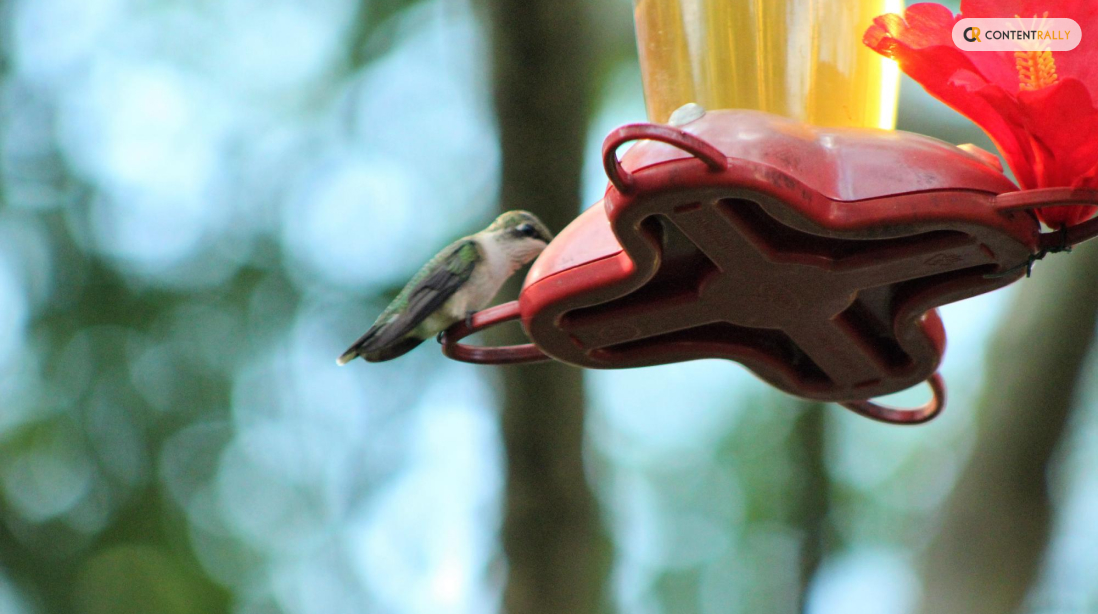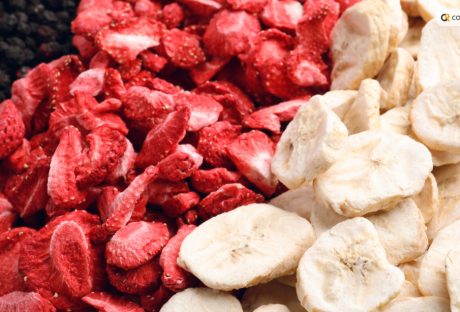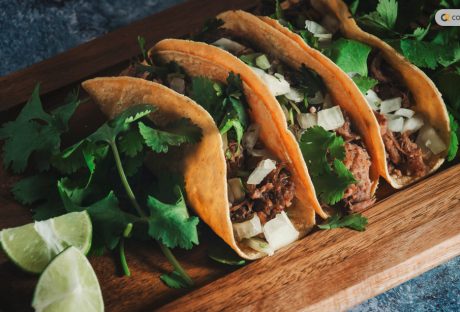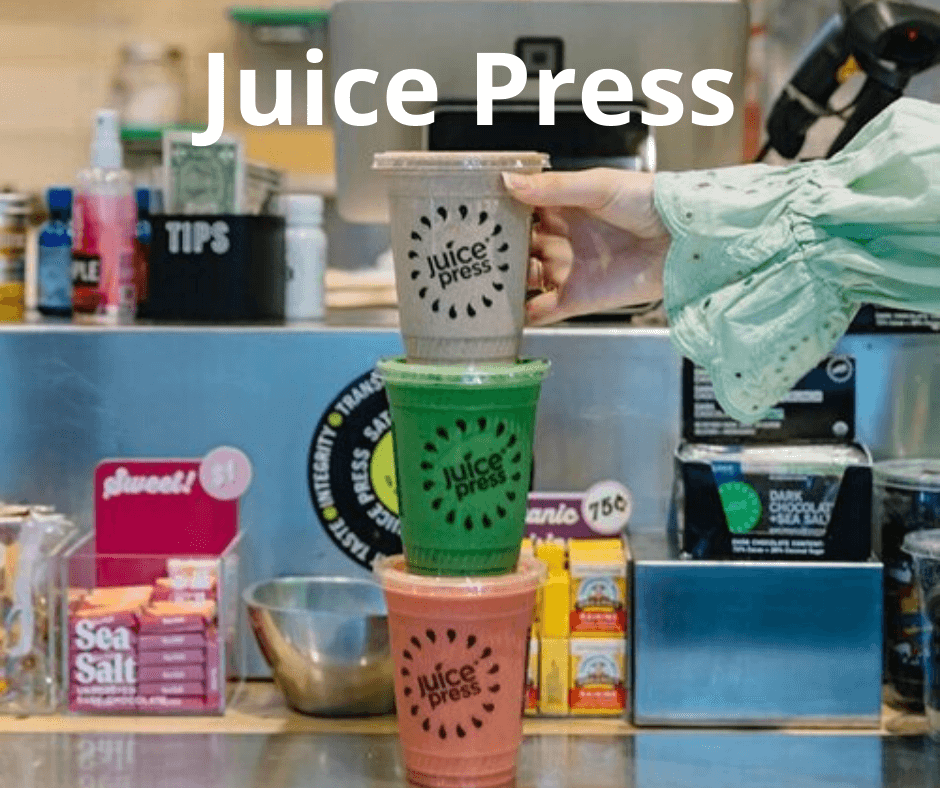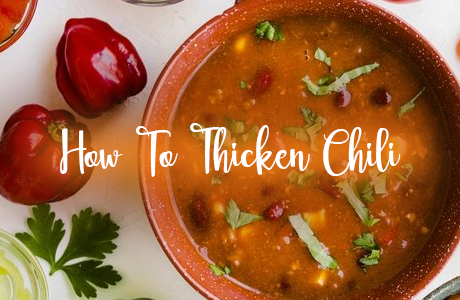It always feels good to see a hummingbird in your garden. To see more of them in your garden, you can keep hummingbird nectar/food in a jar in your garden.
In fact, with a simple hummingbird food recipe, you can make their lives easier. All you need is a few simple ingredients.
In this article, you will learn how to make hummingbird food with simple ingredients. Apart from that, this article also discusses hummingbird nutrition and the steps you can take to set up your bird feeder.
Finally, you will learn how to attract more hummingbirds to your garden. Hence, to learn more, read on to the end of the article.
Understanding Hummingbird Nutrition
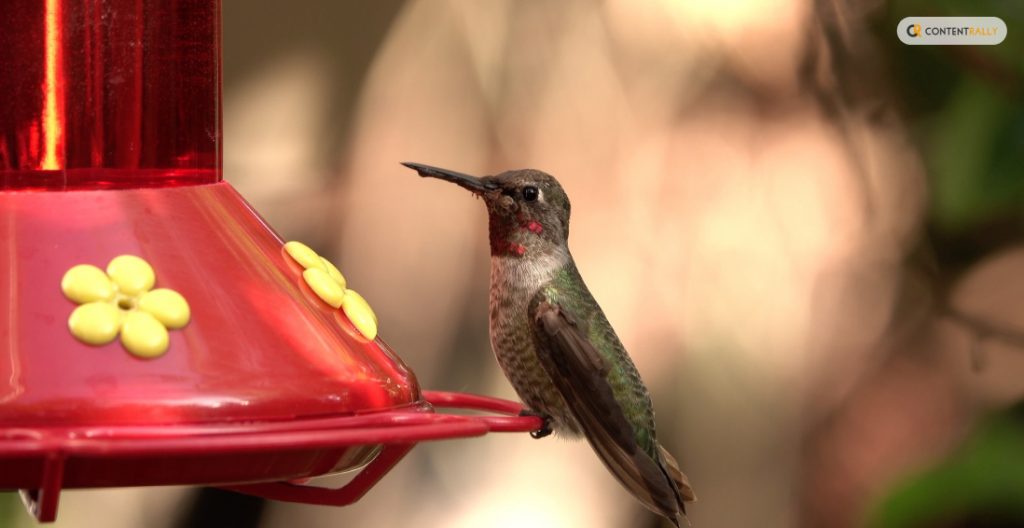
There are a variety of food options a hummingbird needs to meet its nutrition. Although they are one of the smallest birds in the world, they burn a lot of their calories by fluttering their tiny wings. Generally, a hummingbird flutters its wings 90 beats per second to maintain its momentum.
Hence, you can see that hummingbirds need to eat a lot. In fact, to satisfy their daily calorie requirements, these birds even consume half of their body weight. Basically, they feed on bugs and nectar every 10-15 minutes. Also, they visit 1000-2000 flowers per day.
The following are the things that hummingbirds feed on:
1. Nectar: This is the primary food source of hummingbirds. Basically, it consists of 20% sugar and 80% water. Generally, hummingbirds get their nectar from cardinal flowers, bee balm, salvia, and petunias.
2. Insects: For their protein needs, hummingbirds feed on insects. This is also a source of fat and salt for hummingbirds. In fact, nectar does not provide those nutrients. Basically, hummingbirds hunt insects by finding them from flowers, leaves, or tree bark. Sometimes, they also attack insects midair or pluck them from sticky saps.
3. Spiders: Generally, hummingbirds also feed on spiders for protein. However, they are generally small spiders.
4. Tree Sap: When the amount of nectar is low, hummingbirds drink tree sap from tree bark. Generally, woodpeckers drill wells on tree barks to get tree saps.
Hummingbird Food Recipe
Basically, by offering hummingbird nectar, you can help them with their post-workout meal.
Hence, follow the below hummingbird food recipe to make nectar:
Ingredients
The following are the ingredients you need to make hummingbird nectar:
- Filtered Water: 4 Cups
- Regular White Sugar: 1 Cup (If possible, use organic sugar for the recipe)
Procedure
Here are the steps you must follow to make hummingbird nectar:
1. Get four cups of water in a saucepan and bring it to a boil.
2. Once the water reaches the boiling point, take the water off the heat. Add sugar to the boiling water.
3. Stir the mixture until the sugar completely dissolves in the water.
4. The nectar is ready. Now, you must let the nectar cool completely.
5. Get a hummingbird feeder and place the mixture inside the feeder. Make sure to hang the hummingbird feeder outside (in your garden) to attract hummingbirds.
Essential Factors To Consider
The following are some of the major factors you must consider before you start making nectar with the hummingbird food recipe:
- Make sure to change the nectar every four days with a new nectar. This will ensure that the nectar is fresh. Also, remember not to use food coloring in the nectar. Let it be as natural as you can.
- Regularly check the bird feeder every time you change the nectar inside it. Look whether there is a gray mold inside the feeder base or not. Also, check whether any ant has crawled inside the feeder to consume sugar water.
- If you check any dirt or ants inside the hummingbird feeder, throw the bird food away. Basically, it is not good for the birds to drink dirty nectar. In fact, there is a high chance that the birds will not feed on the nectar anyway.
- To clean the feeder, rinse it with warm water. Then, put some bleach into the water inside. This will allow you to clean the feeder with a brush easily.
- Once you clean the feeder, rinse it thoroughly with fresh water. Moreover, allow the water to dry.
- After that, please fill up the feeder with food and place it outside.
Enhancing The Hummingbird Experience
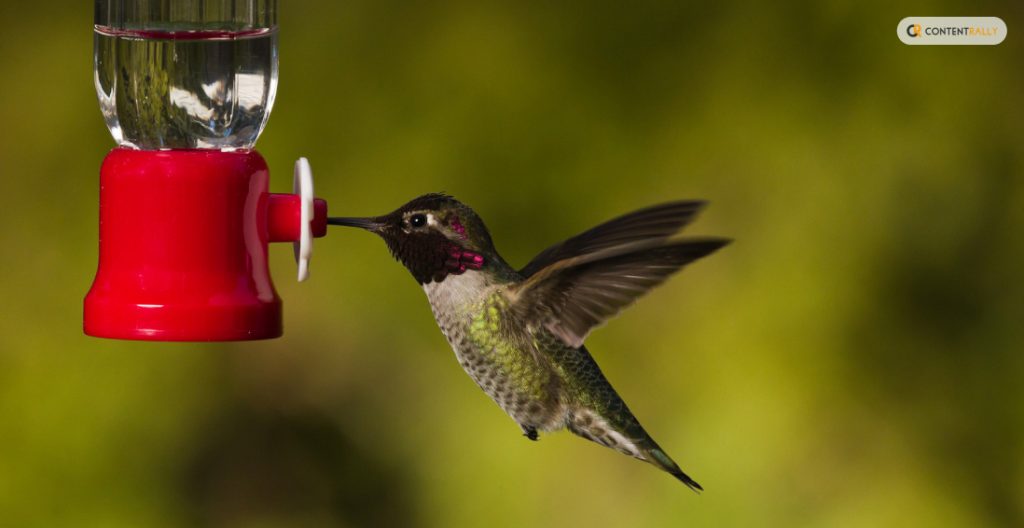
Enhancing the hummingbird experience, you can attract more hummingbirds to your garden/balcony/porch.
The following are some of the steps you must follow if you want to enhance the hummingbird experience:
1. Change The Food Regularly
Make sure to change the food every 3-4 days. This is because nectar spoils quite fast, especially when the weather is hot. In fact, if the weather is above 30 degrees Celsius, make sure to change the nectar regularly. Also, make sure to keep the feeder in the shade. This will prevent the sugar from fermenting.
2. Use The Right Amount Of Ingredient
You can make hummingbird nectar with just water and sugar. However, you must ensure the water-to-sugar ratio is 4:1. Then, boil the water and add the sugar. After that, mix them until the mixture is perfect. After that, you must let the mixture cool before you add it to the feeder.
3. Avoid Honey
Generally, honey can ferment fast and becomes a great place for mold to grow quickly. Moreover, they can be sticky and get on the feathers of hummingbirds. Hence, it is better to avoid honey.
4. Add Another Feeder
Although hummingbirds are small and cute, they can be incredibly aggressive and territorial when confronting other hummingbirds. Hence, to avoid conflict among hummingbirds, it is better to add a second feeder if you want to ensure every hummingbird gets the opportunity to have the nectar.
5. Clean The Feeders
Make sure to clean the feeders every week. Moreover, if you have hot weather around, clean the feeders twice every week. While you clean, ensure the vinegar-to-water ratio is 1:4. Also, rinse the feeders well before you refill. Furthermore, while rinsing, do not use dish soap. This is because they can leave harmful residue on the feeders.
Setting Up Your Hummingbird Feeder
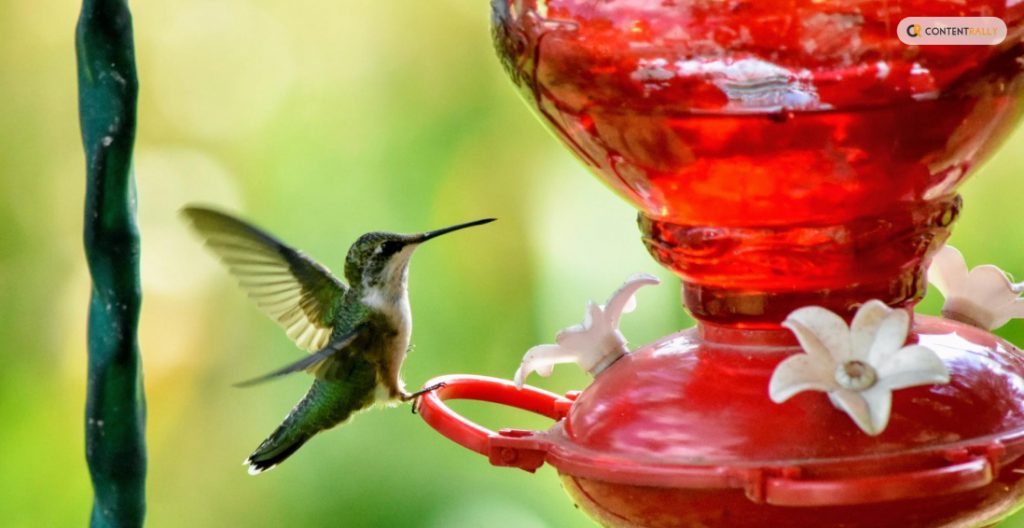
The following are the steps you must take to set up your hummingbird feeder:
- Make the nectar by checking the hummingbird food recipe in the previous section.
- Hang the feeder in your garden at the start of spring. Generally, hummingbirds migrate through your area in the spring. Also, leave the feeder up after the hummingbirds migrate in the fall.
- Hang the feeder in a place where it is visible for hummingbirds to see. Also, make sure to place the feeder in an area where you can have a good look.
- Clean the nectar every 3-4 days and clean the feeder thoroughly each time you change the nectar. This way, you can prevent dust and mold from getting into the feeder.
- Sugar water is safe and helpful for hummingbirds. Basically, it is quite similar to the natural nectar that hummingbirds find in flowers.
- If you want to make your own feeder, use an old spice container, bottle, mason jar, or wine bottle.
Attracting More Hummingbirds
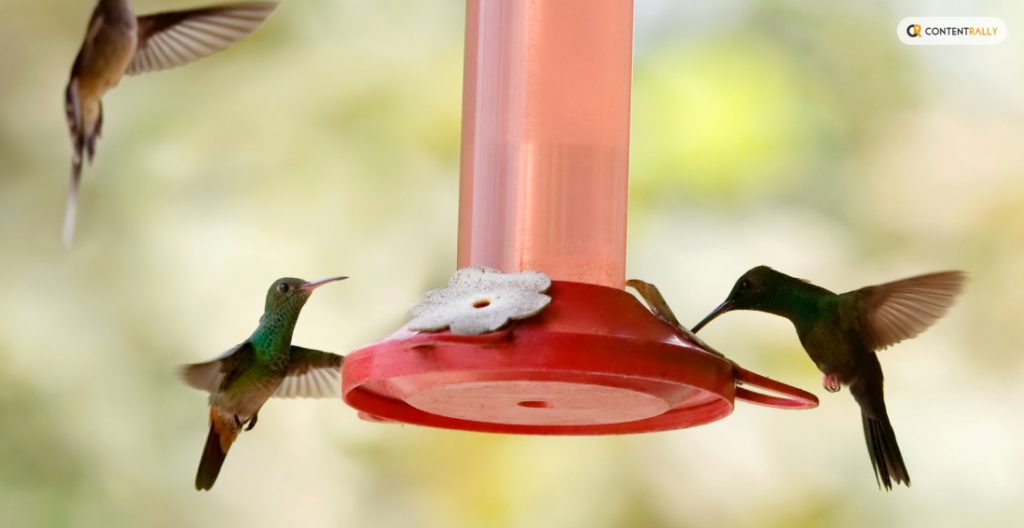
Here are some of the major ways you can attract hummingbirds to your garden:
1. Offer Hummingbird Food/Nectar: If you make sugar water and keep it in a feeder in your garden, you can attract many hummingbirds in your area. To make this item, you can see the hummingbird food recipe above.
2. Keep Water: Generally, hummingbirds also like to bathe. Hence, you can keep some water in a pot/jar to allow hummingbirds to access water for bathing and drinking.
3. Perch Area: You can leave small branches and sticks on your trees and plants. This will allow hummingbirds to perch on.
4. Plant Flowers: There is no alternative to pure nectar that flowers have. Hence, this attracts hummingbirds a lot. For instance, you can use hummingbird sage, honeysuckle, bee balm, and more. Also, you can add other types of flowers to your garden.
5. Keep Other Animals Out: If you have a pet cat/dog in your home, keep them inside. This is because they can bother hummingbirds or even end up killing them.
6. Avoid Pesticides: Pesticides are repellants for hummingbirds as well as insects. Hence, make sure not to use them or use them minimally.
Make Your Hummingbird Food Now
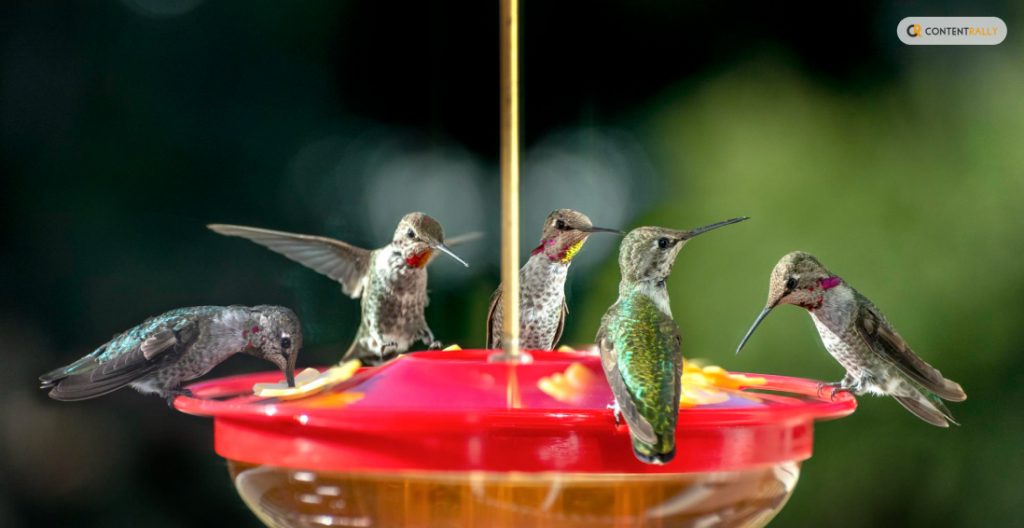
Now, you can make hummingbird nectar with the help of the hummingbird food recipe in the article. However, make sure to change the food every 3-4 days. Also, ensure to clean the jar every time you change the food. This way, you can ensure clean food for hummingbirds.
Do you have more suggestions on how to make hummingbird food? Please share your ideas and opinions in the comments section below.
Additional Resources:













